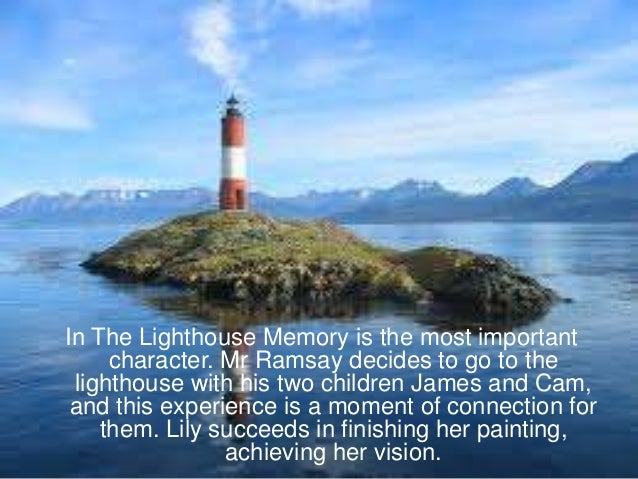To
evaluate my Assignment Click Here
Prepared by : Komal Shahedapuri
Roll No : 14
Paper – 9 : Modernist Literature
M.A (English) : Sem -3
Enrollment No: 2069108420170027
Batch : 2016-18
Submitted to : Smt .S. B Gardi, Department of English, MK Bhavnagar University.
Topic: Vision in to the ‘To the Lighthouse’
Abstract
Virginia Woolf, one of the prominent representatives of modernist novelist in England, has contributed significantly to the development of modern novel in both theory and practice. She abandoned traditional fictional devices and formulated her own distinctive techniques. The novels of Woolf tend to be less concerned with outward reality than with the inner life. She also takes the readers to the high glory of perception thinking. Virginia Woolf’s experience of the social, the solitary, and the visionary of human experience is revealed in both her group expression and individual expression. Best example is her masterpiece ‘To the Lighthouse’, it gives the picture of the inner self and process of the mind of all the characters through the Stream of Consciousness technique and interior monologue. Vision is main focus in this novel which defers from one character to another. This paper is try to show what is the vision of different characters towards life and human relationships.
Key Words: Vision, Virginia Woolf, To the Lighthouse, Lily Briscoe, Mrs. Ramsay
Virginia Woolf’s To the Lighthouse” is divided into three parts, first is ‘The Window’, second is
‘The Time Passes’ and third one is ‘The Lighthouse’. Woolf’s vision of reality postulated both a world of time-flux and a universal harmony outside of flux. Her purpose as an artist was to communicate in the unity and flow of character and symbol this double aspect of reality which combined to form the common life. Lily’s vision of life itself has been surrounded by fluid impressions and personalities. All the fluidity of impressions, of human personalities, of things, which have touched Lily have been struck into stability by that unity which is the singleness of her reality vision.

Both Lily Briscoe and Mrs. Ramsay live in the presence of its reality. Symbolically, their perceptions of reality are usually interlocked with the Lighthouse, in her mystical experience; Mrs. Ramsay identifies the experience with the third stroke of the Lighthouse. For Lily Briscoe, as for Mrs. Ramsay, the Lighthouse symbolizes her vision of life. When Mr. Ramsay lands on the shore of the Lighthouse, Lily simultaneously finishes her painting which expresses her vision of life. Fulfillment of Lily Briscoe's vision completely establishes the nature of the Ramsay family, and added leitmotivs and images of window and lighthouse, land and sea, repeat the theme on the symbolic level until at the end the unity of the painting is complete when Lily Briscoe has had her vision. Mrs. Ramsay is alienating her son from his father and seeking to divert her husband's attention away from James. James's Oedipus complex is clearly nurtured and encouraged by his mother. That is why James hates his father when the youngest child James asks to go to the lighthouse the next day, which receives warm response from Mrs. Ramsay with “Yes, of course, if it’s fine tomorrow”(Woolf, 1994, p.1), but cold disapproval from Mr. Ramsay with “But it won’t be fine” (p.1). Mr. Ramsay said him that if tomorrow the weather is not good, we can’t go to the lighthouse and James became angry and wants to kill his father. The rivalry between father and son is destructive. For her, consciously her domestic triumph, her matriarchy, her selfhood is more important than the integrity of the family. As a person, Mrs. Ramsay is not extraordinary; she has her share of virtues, charms, and faults. She felt bound to protect "the whole of the other sex" and to guard and support her children, and even her husband if he insisted upon her support. She boasted of her "capacity to surround and protect" until she had given all of herself. Mr. Ramsay's demand for praise annoyed her; she wished such praise was not necessary; ‘perhaps it was her fault’. At the conclusion of Mrs. Ramsay's meditation upon the state of the house, when she thought on death and hopelessness, she had a "spasm of irritation" and spoke sharply even to James.
Lily Briscoe a single woman painter, who has been trying to draw a picture for the mother and her little son. We discover that Lily Briscoe is painting a picture in the way that Virginia Woolf expects. During the painting, somehow it seems a bit difficult for her to deal with the blankness in the middle of the picture, which perplexes her even at the following dinner party. The unfinished picture is put aside for ten years during which Mrs. Ramsay has passed away. Lily Briscoe attains major importance as the visionary artist. The fulfillment of the son's desire for integration with the father (and the female's union with the male), is revealed artistically in Lily Briscoe's painting, after she has had her full vision. We must respect Lily Briscoe's view of the Ramsay family, for she is the artist who had the vision. Her analysis of Mr. Ramsay is enlightening: Lily Briscoe went on putting away her brushes, looking up, looking down. The entire action of the novel is unfolded symbolically in Lily Briscoe's painting. From the beginning we recognize her as an outsider. She did not want "her picture looked at", because she is "honest" and because she knows the truth of her vision is difficult to bear, so difficult that even she has doubts of its validity. Lily's consciousness of the exalting powers of love prepares us for her next reaction to her painting, when Lily looked at her painting, "she could have wept”. Lily is aware of Mrs. Ramsay's character; she "laughed almost hysterically at the thought of Mrs. Ramsay presiding with immutable calm over destinies which she completely failed to understand." For a brief time, Lily herself was attracted to at least the idea of marriage, to Paul as a person, but when she experienced almost immediately the most unpleasant sensations, she soon thanked Heaven "she need not marry," seeing marriage as a "degradation" and "dilution”. Lily Briscoe's artistic powers have been stimulated and she has brought a keen insight to bear on the Ramsay family. After ten years she had arrived at the answer to her vision, but could not say just what it was . She knew something was "out of harmony". This search after truth brings Lily to her painting again. The lighthouse perished alone the empty space the problem of the foreground she would return to that "moment of revelation" and finish her picture.

Lily finishes her picture and puts the tree in the very middle of the picture. The tree placed in the middle indicates that Lily, the representative of women independence, has managed to restore the truth: Woman is the real mother of the world, but not man. Women should and can learn to write their history in their own discourse. That the blankness of the picture is finally filled means that women eventually learn to express themselves in their own way. It is Lily’s perseverance and self-sacrifice that make her picture complete. Lisa Williams says that “Lily is like a bee drawn to the intangible…Lily’s unfulfilled lesbian longing for this Mrs. Ramsay, the icon of Victorian womanhood, leaves her completely isolated. Even though Lily can reject the values Mrs. Ramsay represents, she is still nonetheless in love with her” Lily has to sacrifice a lot and rejects all traditional roles of women. Different from Mrs. Ramsay who tends to please and comfort men. (Williams, p.143)
Virginia Woolf symbolizes reality in a physical object because the
Lighthouse rock is comparatively stable whereas the human consciousness, which
perceives reality, is continuously in flow until it touches that reality
outside itself. “As Woolf certainly intended, Lily Briscoe’s paintings have
usually been read as analogous to the novel itself, implying in turn that Lily
represents Woolf herself”. On both the literal and symbolic levels, on the journey and in Lily Briscoe's vision,
is James's desire, and in effect the whole family fulfilled. Thus, the human
personality becomes symbolic of the common life into which all things flow and
merge into the form of that personality.
“Close the door and open the window”.
This is the last dialogue spoken by Lily Briscoe which earlier spoken by Mrs. Ramsay may be it is used as the critique as well as tribute of Mrs Ramsay. The novel is open ended that can accept different views to look at that who is the protagonist , her visions towards life and which aspect to be prove by it.
Works Cited
Desai, Kausal. "Blogger."
<http://desaikaushal1315.blogspot.in/2014/10/virginia-woolfs-to-lighthouse-critique.html>.
Hameed, Dr. M Madhavan
and N Sheik. "Vision of Reality in Virginia Woolf’s To the
Lighthouse." DJ Journal of English Language and Literature 1(2)
(2016): 49-52.
Jingrui, HUI.
"Feminism Revealed From Lily’s Picture in To the Lighthouse." Vol.
7. Studies in Literature and Language, 2013. 73-76.
Pedersen, Glenn.
"Vision in to the Lighthouse." Vol. 73. Modern Language Association.
585-600.


